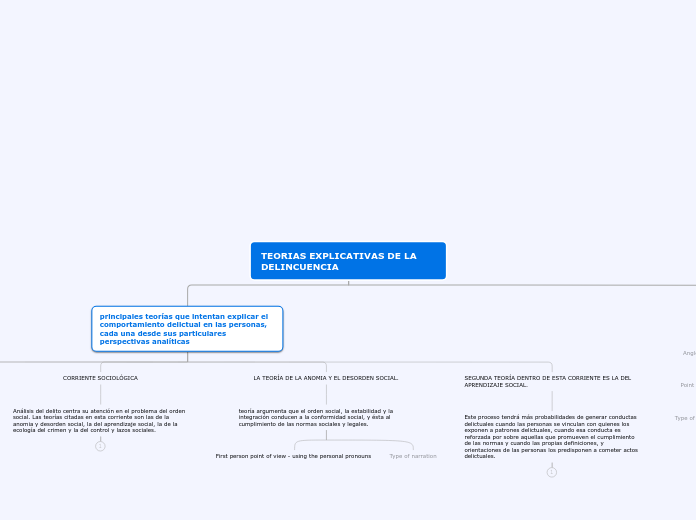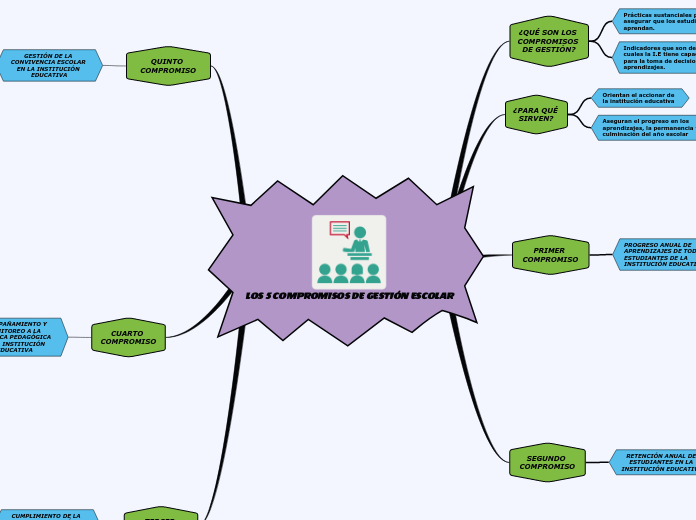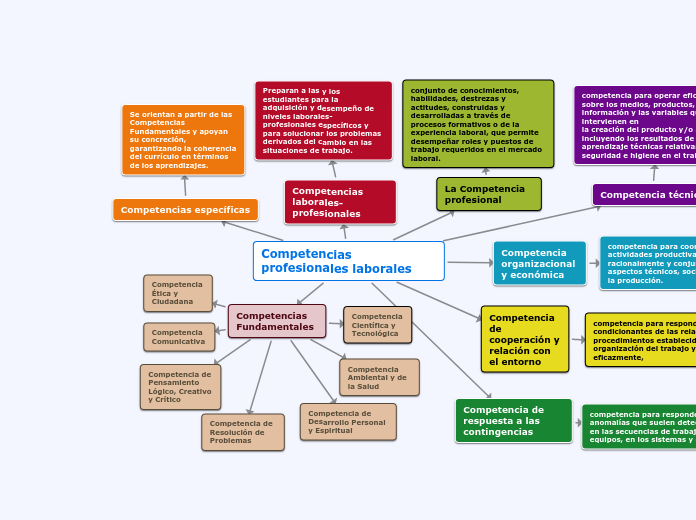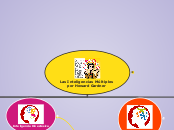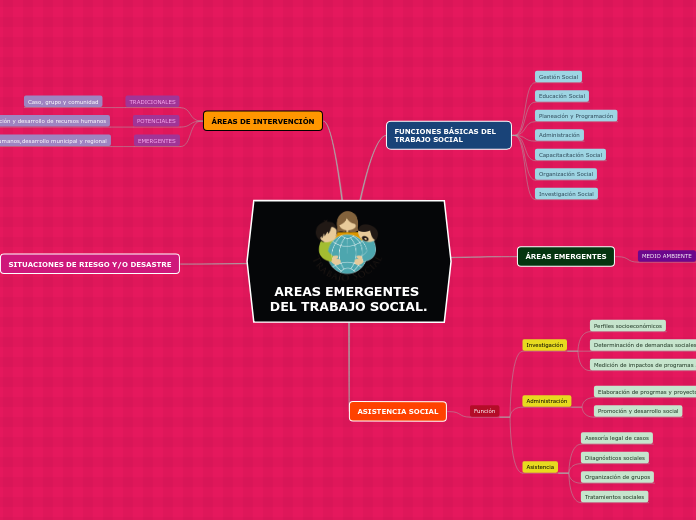TEORIAS EXPLICATIVAS DE LA DELINCUENCIA
Type in the name of the multiple-perspectives text.
Example: Bridge to Terabithia by Katherine Paterson
Issue
Angle No.4
Angle No.3
Angle No.2
Type in a relevant quote that highlights the character's point of view towards
Issue.
Try following a citation format: author's name, chapter, and page.
Example: 'Jesse drew the way some people drank whiskey. (...) Lord, he loved to draw. (...) When he was in first grade, he told his father that he wanted to be an artist when he grew up.' (Paterson, 2. 7)
principales teorías que intentan explicar el comportamiento delictual en las personas, cada una desde sus particulares perspectivas analíticas
Identify an important issue from the text that is being presented from different angles. Type it in.
Example: Jesse's drawing talent.
SEGUNDA TEORÍA DENTRO DE ESTA CORRIENTE ES LA DEL APRENDIZAJE SOCIAL.
Decide on the fourth point of view
Type in the name of the last character whose perspective on the issue you are going to present.
Example: Leslie Burke, Jesse's new next-door neighbor, and best friend.
Este proceso tendrá más probabilidades de generar conductas delictuales cuando las personas se vinculan con quienes los exponen a patrones delictuales, cuando esa conducta es reforzada por sobre aquellas que promueven el cumplimiento de las normas y cuando las propias definiciones, y orientaciones de las personas los predisponen a cometer actos delictuales.
Point of view
Type in a relevant quote that highlights the character's point of view. Try to follow a citation format: author's name, chapter, and page.
Example: I can't get the poetry of the trees,' he said. She nodded. Don't worry,' she said. You will someday. He believed her.' (Paterson, 4. 24)
How is the viewpoint introduced in the story?
Choose an answer:
First person point of view - using the personal pronouns 'I' or 'we'Second person point of view - using the personal pronoun 'you'Third person point of view - using the third-person pronouns 'he', 'she' and 'they'Omniscient point of view - an all-seeing observer tells the story
LA TEORÍA DE LA ANOMIA Y EL DESORDEN SOCIAL.
Whose character does the third point of view belong to?
Type in his/her name.
Example: Mr. Aarons, Jesse's father.
teoría argumenta que el orden social, la estabilidad y la integración conducen a la conformidad social, y ésta al cumplimiento de las normas sociales y legales.
What does the character think, say or do that suggests their perspective on the issue?
Type in a quote and try to maintain the citation format.
Example: 'He would like to show his drawings to his dad, but he didn't dare. (...) He'd thought his dad would be pleased. He wasn't. What are they teaching in that damn school? he had asked.' (Paterson, 2.8)
First person point of view - using the personal pronouns
What kind of narration introduces the viewpoint?
Choose an answer:
First person point of view - using the personal pronouns 'I' or 'we'Second person point of view - using the personal pronoun 'you'Third person point of view - using the third-person pronouns 'he', 'she' and 'they'Omniscient point of view - an all-seeing observer tells the story
CORRIENTE SOCIOLÓGICA
Decide on the second point of view
Name the character (it can either be the main character or one of the supporting characters) whose point of view you are presenting.
Example: Miss Edmunds, Jesse's music teacher.
Análisis del delito centra su atención en el problema del orden social. Las teorías citadas en esta corriente son las de la anomia y desorden social, la del aprendizaje social, la de la ecología del crimen y la del control y lazos sociales.
Type in a quote that points out the character's position about the issue.
Try to follow a citation format: author's name, chapter, and page.
Example: 'She said he was unusually talented, and she hoped he wouldn't let anything discourage him.' (Paterson, 2. 8)
How is the viewpoint introduced in the story?
Choose an answer:
First person point of viewSecond person point of viewThird person point of viewOmniscient point of view
Angle No.1
Point of view
CORRIENTE PSICOLOGICA
Decide on the first point of view you are going to present.
Type in the name of the character (it can either be the main character or one of the supporting characters) whose point of view belongs to.
Example: Jesse Oliver Aarons, Jr., the main character of the novel, a fifth-grader living in a rural Southern area.
esta corriente, la teoría psicoanalítica señala que la conducta transgresiva tendría su raíz en anomalías o disturbios en las etapas de la más temprana niñez del desarrollo emocional.
Type in a relevant quote that highlights the character's point of view towards
principales teorías que intentan explicar el comportamiento delictual en las personas, cada una desde sus particulares perspectivas analíticas.
Try following a citation format: author's name, chapter, and page.
Example: 'Jesse drew the way some people drank whiskey. (...) Lord, he loved to draw. (...) When he was in first grade, he told his father that he wanted to be an artist when he grew up.' (Paterson, 2. 7)
Type of narration
What type of narration introduces the viewpoint?
Choose an answer:
First person point of view - using the personal pronouns 'I' or 'we'Second person point of view - using the personal pronoun 'you'Third person point of view - using the third-person pronouns 'he', 'she' and 'they'Omniscient point of view - an all-seeing observer tells the story
